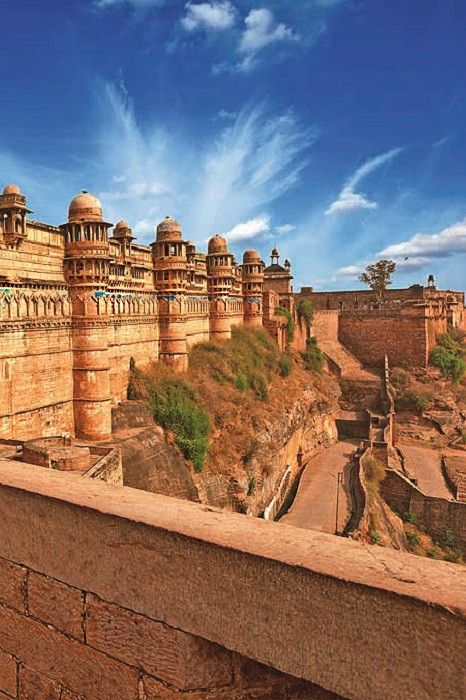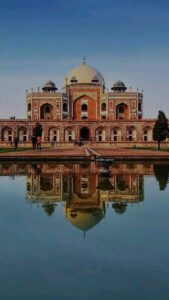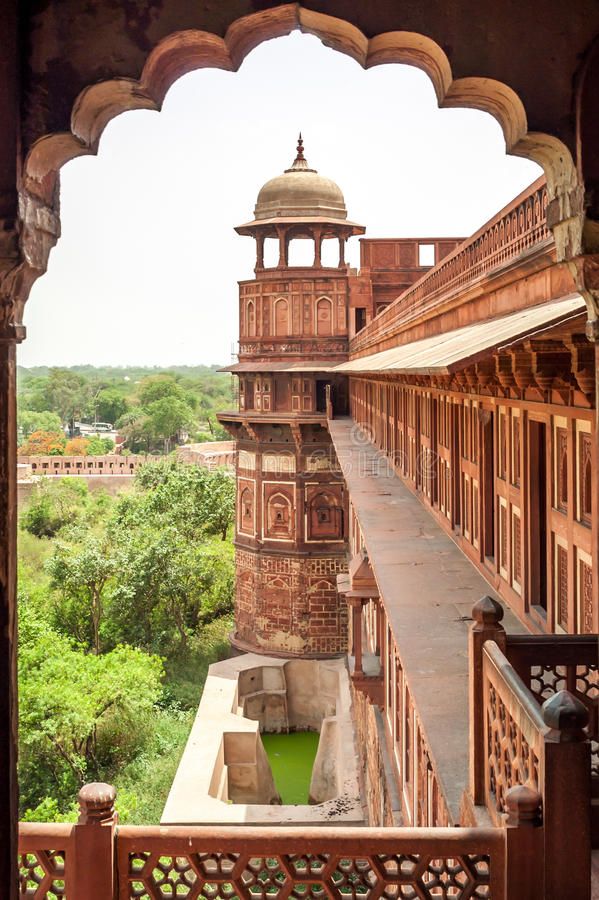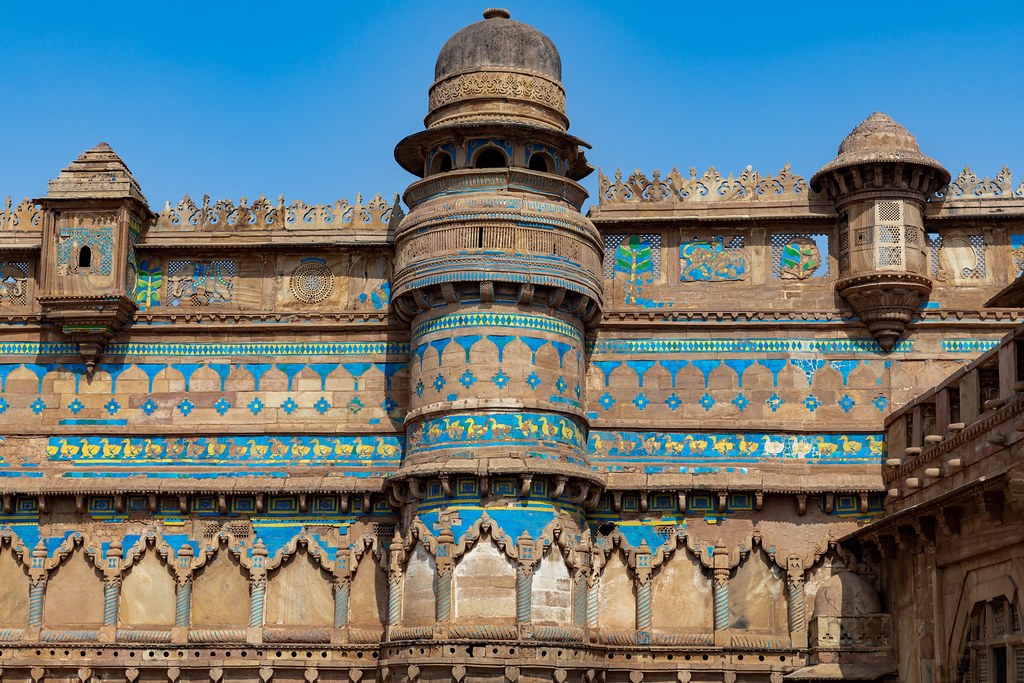Gwalior Fort: The Majestic Stronghold of Timeless Valor

Located in the heart of Madhya Pradesh, Gwalior Fort is one of India’s most iconic and historically significant forts. Often referred to as the “Gibraltar of India,” this magnificent structure stands atop a steep hill, offering breathtaking views of the city. Built over centuries by various rulers, the fort showcases an impressive blend of Rajput, Mughal, and Hindu architectural styles.
The massive sandstone walls, intricately carved temples, grand palaces like Man Singh Palace, and stunning water tanks reflect the fort’s rich past. Notable attractions within the fort include the Gujari Mahal, Saas Bahu Temples, Teli Ka Mandir, and the massive Jain sculptures.
Gwalior Fort has witnessed numerous battles and has been home to powerful dynasties, adding to its mystique. With its awe-inspiring architecture, historical significance, and cultural legacy, this fort is a must-visit destination for history lovers, travelers, and photography enthusiasts. A visit here is a journey through India’s glorious past.

A Brief History of Gwalior Fort
Gwalior Fort’s origins date back to the 8th century when it was built by Raja Suraj Sen of the Tomar dynasty. Its location atop a 100-meter-high sandstone hill made it a formidable military stronghold, with its strategic position offering a sweeping view of the surrounding area. Over the centuries, the fort has seen several rulers and dynasties, including the Tomars, Mughals, and Marathas.
One of the most interesting aspects of the fort is its unique history. The fort’s construction and design reflect the influence of different architectural styles, from Hindu and Islamic to Persian. It is said that the fort’s most glorious years came under the rule of Raja Man Singh Tomar in the 15th century. He is credited with the fort’s beautification, particularly the creation of the Man Singh Palace, which stands as a testament to the fort’s grandeur.
Architectural Marvels Within Gwalior Fort
Gwalior Fort is not only a place of historical significance but also a showcase of architectural brilliance. Among its many attractions are:
-
Man Singh Palace: This stunning palace is the most iconic structure inside Gwalior Fort. Built by Raja Man Singh Tomar, the palace combines Hindu and Mughal architectural styles. The palace’s intricately designed interiors, with elaborate frescoes and beautiful carvings, reflect the grandeur of the Tomar dynasty. Visitors can explore its chambers, balconies, and terraces, all offering magnificent views of the fort complex and the city below.
-
Saas-Bahu Temples: These two ancient temples, dedicated to Lord Vishnu, are renowned for their architectural beauty. The temples’ intricate stone carvings and towering spires are a visual treat, showcasing the skill and craftsmanship of the artisans of the time. The temples’ names, “Saas” (mother-in-law) and “Bahu” (daughter-in-law), are linked to a local legend, adding to the mystique of these sacred structures.
-
Gwalior Fort Walls and Gates: The imposing walls of Gwalior Fort, made of sandstone, stretch for over 5 kilometers and stand as an example of military architecture. The fort has several gates, with the Suraj Gate being the most famous. These massive gates, along with the fort’s impressive fortifications, make it an architectural wonder that once defended the region from invaders.
-
Gupta Period Monuments: Within the fort complex, visitors can also find remnants from the Gupta period. The ancient inscriptions and ruins from this era provide a glimpse into the historical significance of the region during the 4th to 6th centuries AD.
-
Jai Vilas Palace: This palace, located within the fort premises, was built during the Maratha rule in the 19th century. Though not as ancient as the other structures, the palace’s opulent design and interiors reflect the royal lifestyle of the period. It is a great example of Maratha architecture, featuring a blend of European and Indian design elements.

How to Reach Gwalior Fort
Gwalior Fort is easily accessible by road, rail, and air. The Gwalior Airport, located about 8 kilometers from the fort, has regular flights from major cities like Delhi, Mumbai, and Jaipur. The fort is also well-connected by train, with the Gwalior Railway Station being just 3 kilometers away. For travelers opting for road transport, Gwalior is well-connected to nearby cities like Agra and Jaipur via a network of highways.
Best Time to Visit Gwalior Fort
The best time to visit Gwalior Fort is during the cooler months from October to March, when the weather is pleasant and comfortable for sightseeing. During this time, the temperature ranges between 10°C and 25°C, making it ideal for exploring the fort’s vast complex, intricate architecture, and historical landmarks without the discomfort of extreme heat.
Seasonal Guide to Visiting Gwalior Fort
Winter (October to March) – Best Time
- The most pleasant season for exploring the fort.
- Perfect for enjoying the breathtaking views and intricate details of the architecture.
- Ideal for attending the Tansen Music Festival, held in December near the fort, celebrating Hindustani classical music.
Summer (April to June) – Avoid if Possible
- Gwalior experiences scorching heat, with temperatures soaring above 40°C.
- Sightseeing can be challenging due to the harsh sun and high humidity.
- If visiting in summer, it’s best to explore the fort early in the morning or late in the evening to avoid peak heat.
Monsoon (July to September) – Moderate Time
- The fort and its surroundings appear lush and scenic after rainfall.
- However, occasional heavy rains and humidity can make walking around the complex slippery and uncomfortable.
Tips for Visiting Gwalior Fort
- Wear Comfortable Footwear: Gwalior Fort is large, and you’ll be doing a lot of walking, so comfortable shoes are a must.
- Carry Water and Snacks: The fort complex can take several hours to explore, and there are limited food and water facilities within the fort, so it’s wise to carry your own supplies.
- Attend the Light and Sound Show: The evening light and sound show is a must-see. It brings the fort’s history to life with an impressive combination of visuals and narration, giving you a deeper understanding of the fort’s significance.

Conclusion
Gwalior Fort stands as a testament to India’s rich history and architectural heritage. From its imposing walls and historical structures to its breathtaking views and serene temples, the fort offers something for everyone. Whether you’re interested in history, architecture, or simply seeking a beautiful place to explore, Gwalior Fort is an unforgettable destination. Its blend of historical significance, architectural beauty, and natural splendor makes it one of India’s finest treasures.






Recent Comments